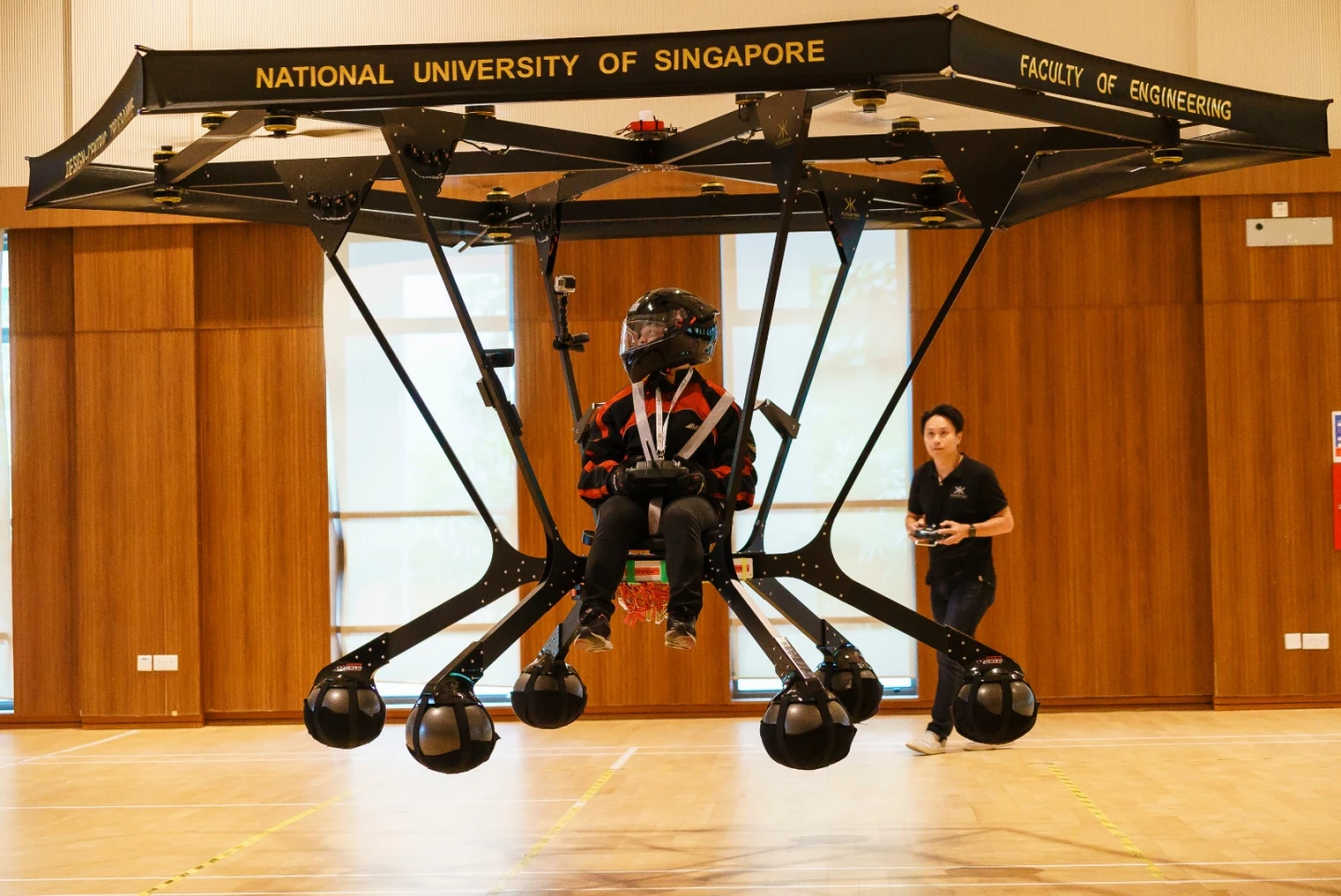This year, we've seen a number of important developments in the race to bring personal flyers to market. A team of flying enthusiasts from Hungary took to the skies in a proof of concept tricopter named Flike in March, Malloy Aeronautics announced plans to develop its Hoverbike for the US Department of Defense at the Paris Air Show in June, and the JB-9 made its maiden flight around the Statue of Liberty just last month. Now a team of students from Singapore has joined the fray with a battery electric multicopter called Snowstorm that's being designed for recreational flying.
The Snowstorm vertical take-off and landing prototype is the culmination of two semesters' work under a collaborative program at the National University of Singapore known as FrogWorks, which challenges students to design and construct clean leisure craft. The eight-strong student team prototyped the design by initially building a scale model, before starting work on a version that could carry, and be controlled by, a single pilot.
Mounted to a hexagonal anodized aluminum frame with carbon fiber plates and tubes and Kevlar ropes are 24 electric motors that each drive a 76 cm (30 in) diameter prop. The aircraft's three lithium batteries, each designed to function independently as a safety measure, provide enough juice for five minutes of flight with a 70 kg (155 lb) pilot aboard. The pilot's seat is secured to the frame by a five-point harness and six landing gear legs, each ending in an inflatable ball, break out below.

The pilot can adjust pitch, roll and yaw, as well as thrust, but the craft also offers a number of automated flight modes, including altitude hold, loiter and position hold. As an added safety measure, the craft can also be controlled from the ground at the flick of a switch to terminate the flight and bring Snowstorm smoothly down to terra firma.
In addition to building the frame, the student team also designed and implemented Snowstorm's electrical control and stabilization system, as well as a pilot safety and energy management and supply system. The current prototype can also be dismantled for ease of transport.
"NUS' Snowstorm shows that a personal flying machine is a very real possibility, primarily as a means to fulfil our dreams of flying within a recreational setting," said Dr Joerg Weigl, one of two supervisors of the project.
The team intends to continue development of Snowstorm with the aim of eventually bringing the project to commercialization.
A video of Snowstorm in action can be viewed below.
Source: National University of Singapore







